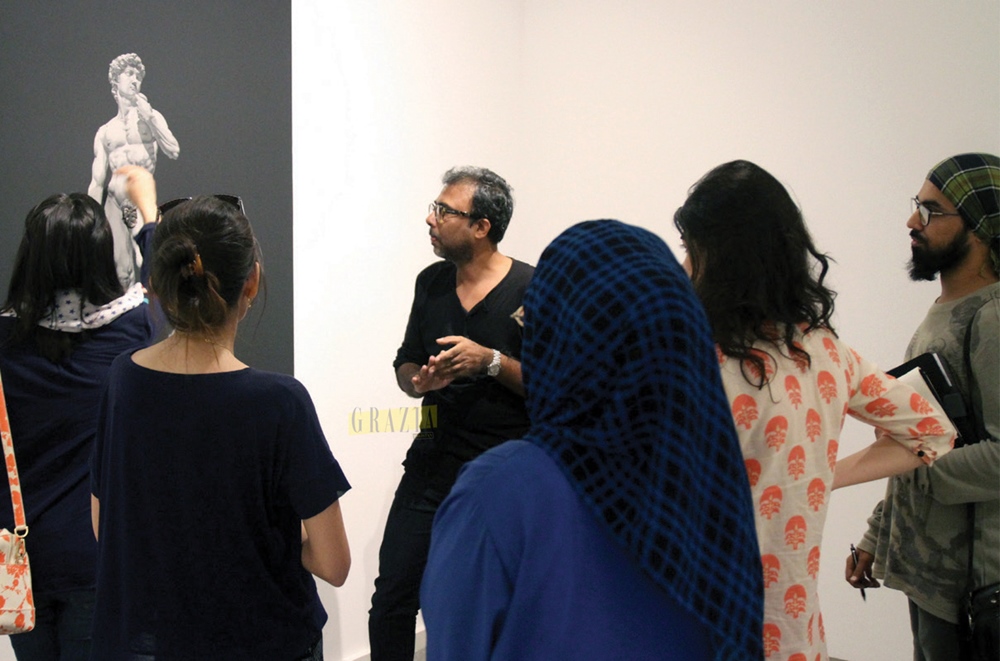On late a Thursday evening, we had the honour of visiting Adeel uz Zafar in his studio. We have been following his work for many, many years and finally had the chance to ask the questions we had been holding on to.
WHEN YOU MEET Adeel, he is the most down-to-earth human you will ever come across. His studio was a treat to our sore eyes, because we had all his fantastic works around us — from the tiniest of mediums up to the largest. You can see all his inspirations around, all the stuffed characters with lots of cloth bandaged around. We sat down to sip on our tea and discuss his journey.
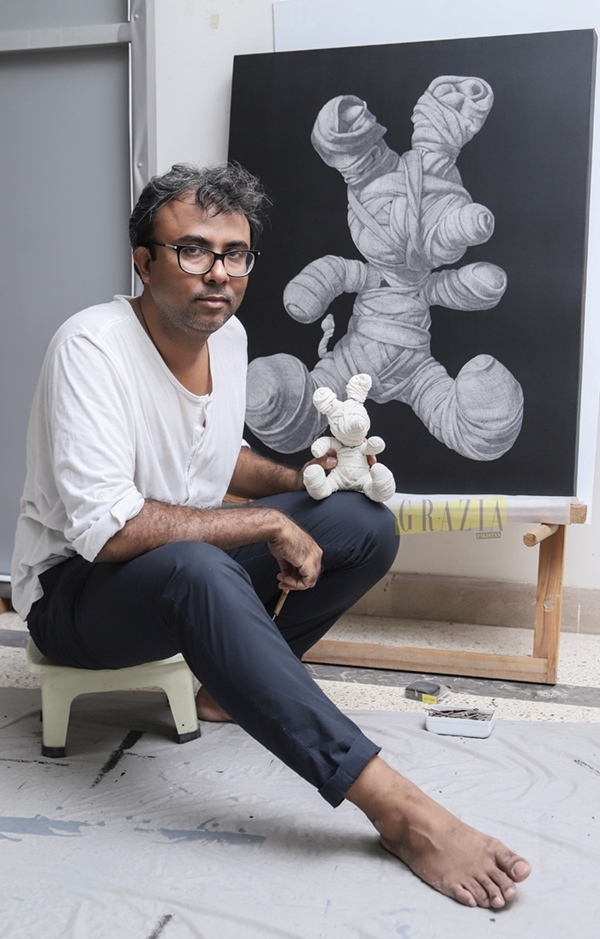
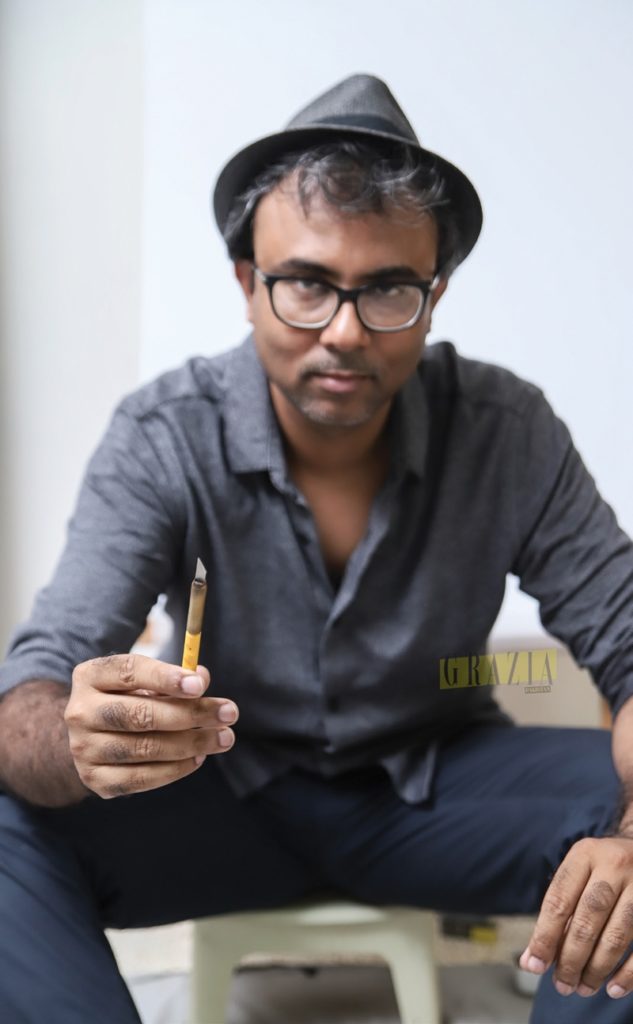
Our first question was something very simple but something that everyone has been wanting to ask him. “How did you chose encraving to be your signature style?” Adeel started off by telling us that he graduated in 1988 from NCA and right after that he moved back to Karachi from Lahore. “I worked as a freelance illustrator with numerous publishing houses. My job was to make illustrations for children’s textbooks. I later got a chance to go to the northern areas in Gilgit. There was a programme by the British Council. My job was to go and see the culture there and make textbooks accordingly. They had no concept of railway station for instance, but they have their own local version of things and means. There is a strong cultural diversity that I noticed. I had to sketch accordingly. I stayed there for about 5 to 6 years. That’s how it all began for me.”
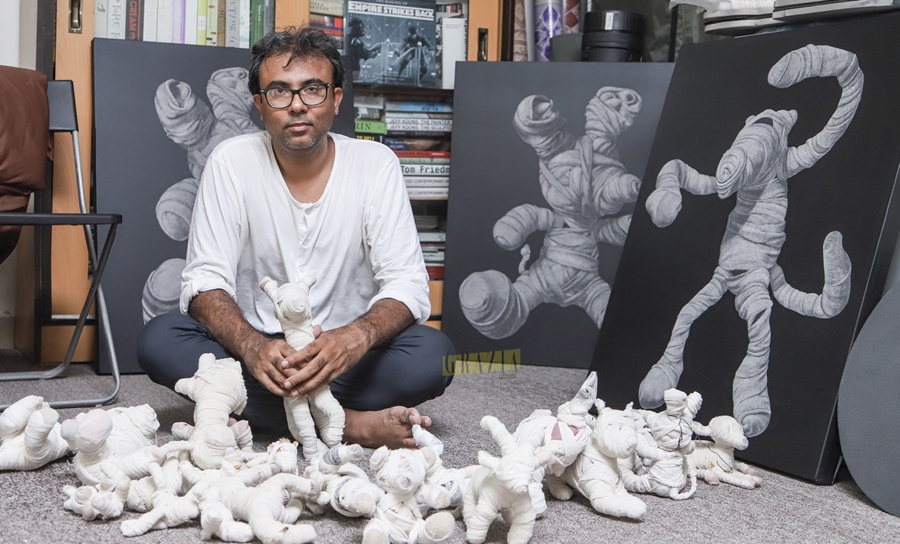
He told us that conventional mediums were very hard to find in the northern areas. There was basically no paint and no paper available. “I only had some cutters and blades along with some photographic paper. I started scraping surfaces of the photographic paper. That gave me a very linear line to work with. I started enjoying the process. It is a subtractive method. I made smaller drawings. Most of the drawings were of the characters I was working with during those days. I saw a lot of potential in this process. I wanted to explore it more but the limitation for me was the size of the medium I was using. Photographic paper is restrictive. There is only so much you can do with it and make with it.”
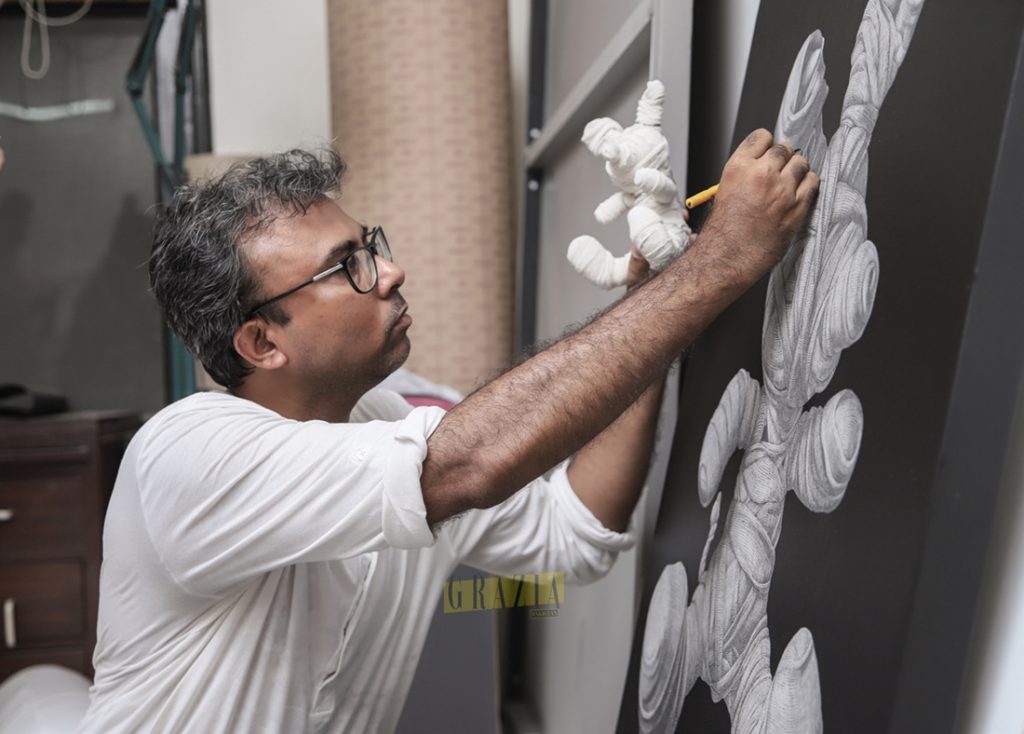
When the project was over Adeel moved back to Karachi and kept searching for a similar surface but he needed a bigger scale. He told us that he started teaching in Indus Valley in about 2005/06. There was a time he was teaching in 3 different schools all at once — Karachi Grammar School, Karachi School of Arts, and Indus Valley School of Art and Architecture. “I was also working in a 3D animation house. I used to make characters for video games. I think my characters that I make now and their idea and concept came to me through that phase of my life. The 3D feel of my images are es-sentially inspired by the days I worked as an illustrator. At all the schools i was teaching, I used to give our students assignments for tones and shapes. We used to ask them to wrap the object with cloth, so that they could focus on the shapes and tones more than the object itself. This process helps you follow the light and automatically translate that on paper —all these things at the back of my mind led to what I do now.”
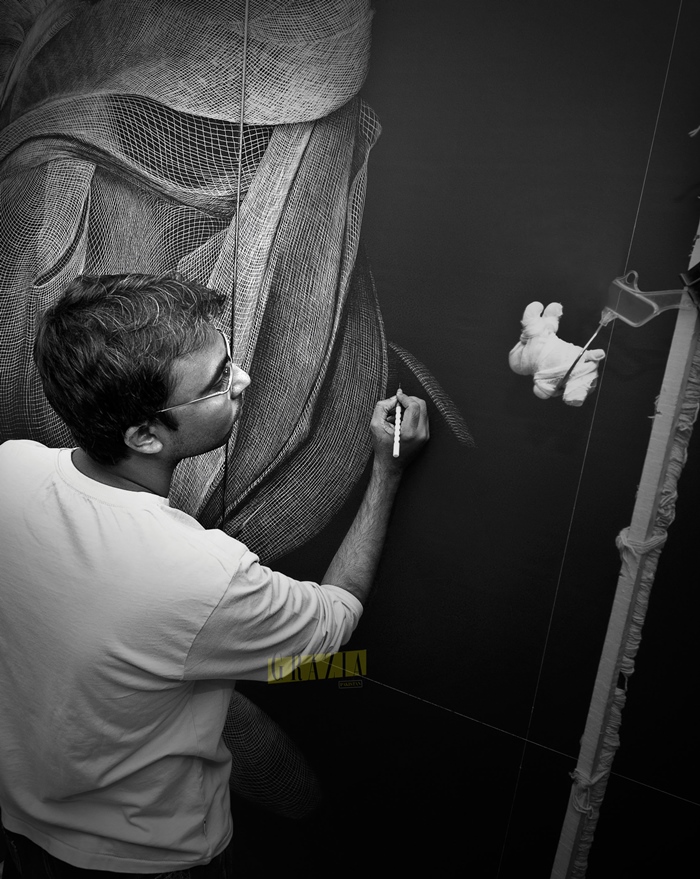
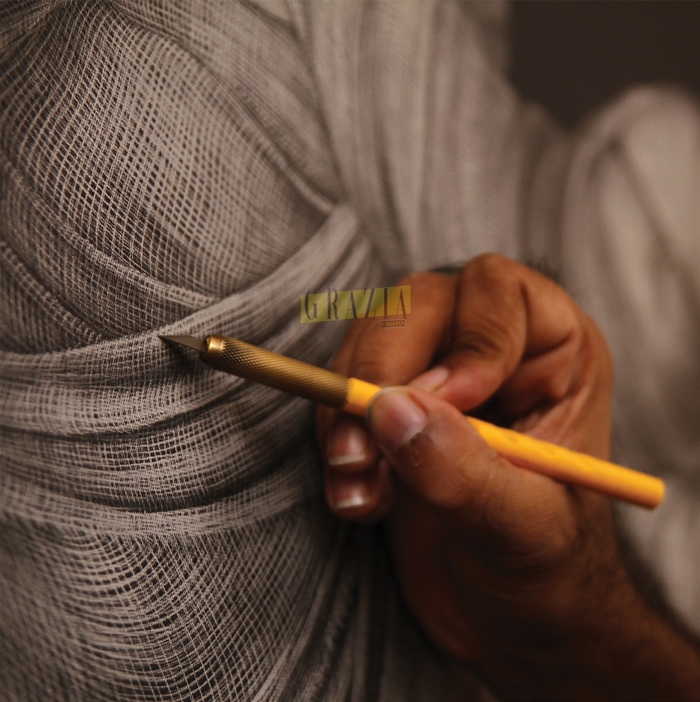
Adeel then went on to share with us his “eureka moment” — the way he finally found a base to carve the imagery he wanted to for so long. “I was at my house one day and we were getting the flooring fixed and that is when I came across vinyl. My hand dropped on it and I ended up scratching it a bit by mistake. It was that moment that I realised this was going to be my ultimate base. I could carve my work easily and I wouldnt then be restricted to size of the medium because vinyl comes in unlimited sizes.”
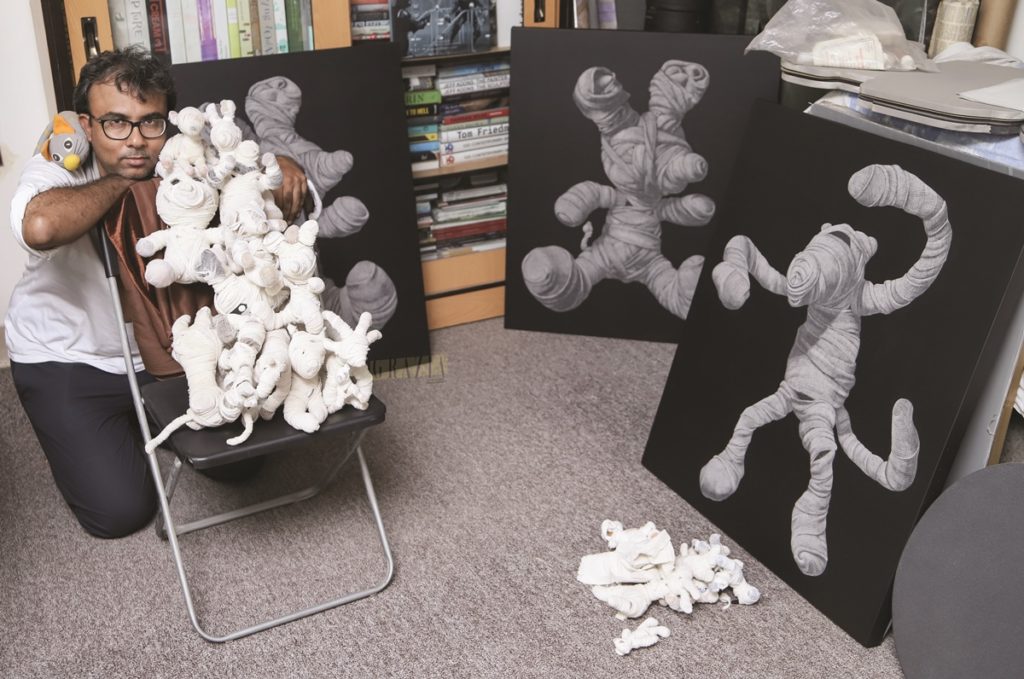
We asked Adeel when his first show took place and what the experience was like. He told us that his first show was a group show in the year 2009. When he finally found the surface he wanted to work on, he knew he wanted to work on an exremely large size but Adeel shared with us that he was looking for a gallery space that was spacious enough to exhibit his work. He was looking for a greater visual impact. But reality was that there is really no gallery big enough in Karachi. Adeel told us that 2009 “was a time new miniaturism was booming. A lot of art collectors opt for smaller works because its simpler for them
to be able to keep it and collect more pieces. I then decided to propose our first group show to VM Art Gallery. It was titled ‘size does matter’. VM Gallery is the most spacious gallery in Karachi and each of the artist would only bring in one work to the exhibition. People coming in to the gallery would engage with our work more. That is how I took the idea forward. The show was a hit and we had a very positive response.”
It seems there has been no turning back for Adeel uz Zafar since then!
